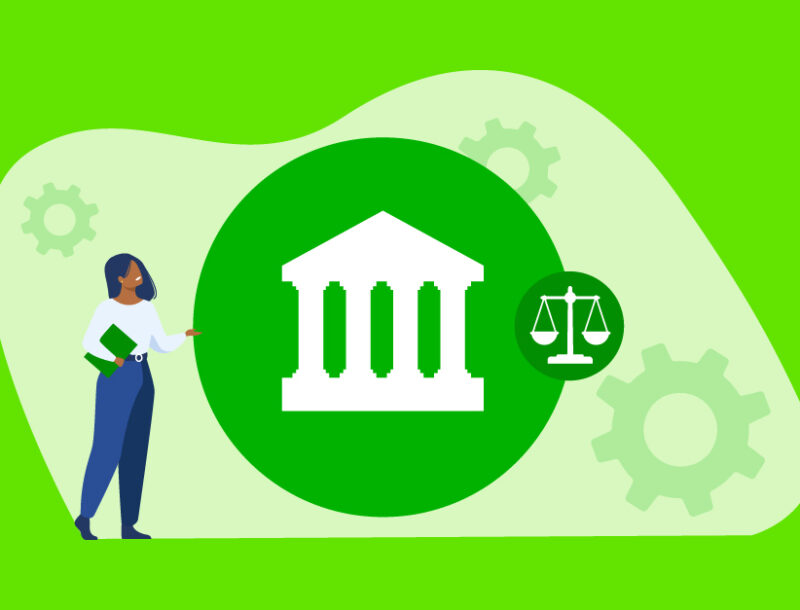Episode 71: Beyond Deregulation: Addressing Current Marketing Compliance Risks Pt. 2

While federal regulators may be pulling back, the scrutiny on consumer protection is only growing. Join Rhonda McGill, Sr. Director of Customer Marketing here at PerformLine, as she continues her discussion with Venable Attorneys Ellen Berge and Jonathan Pompan, who offer insights on the shifts occurring at the federal level and the states are filling in the gaps, along with their emphasis on the reality that although priorities may have shifted, the risk has not gone away.
In the final episode of this two-part series, we will discuss:
- Diffusing the buzz around deregulation and building a durable compliance program
- Examples of proactive compliance opening the door for innovation
- The compliance ROI and making the business case for trust, protection, and growth
- Navigating risks with third-party partnerships
- Advertising and disclosure enforcement trends
Show Notes:
- Connect with Rhonda: https://www.linkedin.com/in/rhonda-mcgill/
- Connect with Ellen: https://www.linkedin.com/in/etberge/
- Connect with Jonathan: https://www.linkedin.com/in/jonathan-pompan-43535935/
- Listen to Part 1: https://performline.com/blog-post/episode-70-beyond-deregulation-addressing-pt-1/
- Beyond Deregulation: Addressing Current Marketing Compliance Risks: https://comply.performline.com/webinar/beyond-deregulation
- Subscribe to PerformLine to stay connected to resources and updates: https://lp.performline.com/subscribe-to-performline
Subscribe to COMPLY: The Marketing Compliance Podcast
About COMPLY: The Marketing Compliance Podcast
The state of marketing compliance and regulation is evolving faster than ever, especially for those in the consumer finance space. On the COMPLY Podcast, we sit down with the biggest names in marketing, compliance, regulations, and innovation as they share their playbooks to help you take your compliance practice to the next level.
Episode Transcript:
Rhonda:
Hey there, COMPLY podcast listeners, and welcome to this week’s episode. Today I’m bringing you part two of my discussion with Venable Attorneys, Ellen Berge and Jonathan Pompan. In this episode, we discuss the importance of ignoring the noise and maintaining the focus on strengthening your compliance program, taking advantage of innovation and communicating the ROI.
We also talk about some of the trends with advertising and disclosures and the rise in enforcements at the state level. You are definitely in for a treat, so get cozy, take some good notes, and as always, we appreciate you listening and we hope you enjoy.
Jonathan:
I think for compliance departments and, and folks in the compliance function, I think it is certainly appropriate and accurate to be able to say to the rest of the business and other stakeholders who may be questioning, do we need compliance now? Mm-hmm. Or can we ratchet back that, the response back to that is, is ’cause we get that question too and it, it’s tempting to equate, some of the, these, the deregulatory changes, the buzz. Any amount of parlor gang drama that might be happening here in Washington, DC where we’re located it’s it’s tempting to equate that with lower risk, but that’s just not how this works with the consumer protection laws still being enforced and so many different potential angles for enforcement, you know, any type of perceived and I think that, it, the, it’s too soon to know if it’s if it’s gonna be real or if it’s just gonna be perceived, but a perceived slowdown on the federal level. Even if that were to create a vacuum, there’s others that will fill that space and historically have always been around and filled that space in any event.
Yes, there are companies that get a class action loss or consumer complaints, a class action lawsuit, a regulatory exam and an enforcement action, all on the same issue that had, that has, historically that does happen, but more often than not, it’s not all of those, it’s just one of those and, you know, all virtually all of those are still potentially on the table for a company. So, I think that proactive compliance is, is really important. It’s how companies build resilience and durability and, as we’ve said in many different situations, including some of the recent writing we’ve done.
Compliance isn’t just a department that you know, is a bunch of no’s. It’s if done right, it’s the department that helps companies get to Yes, with confidence and that’s especially true in times like now where there’s the potential for at least a perception of ambiguity.
Rhonda:
And I appreciate that and I think that most compliance teams would appreciate, being able to frame it in that, in that way, because so often compliance is seen as this, the no, you know, they’re the bottleneck of the company and it’s like, no, you have to really look at you know, compliances as, that partner that’s gonna help you to get to the yes.
So let’s talk about that from an opportunity standpoint. So, have you seen some examples where proactive compliance has opened up a door to innovation, maybe enabling a faster product launch or some smoother partnerships, and what does that look like in practice?
Ellen:
Well, I have certainly been enamored and fascinated by the use of AI in risk management type compliance efforts. I’ve studied a lot of payment processors that are using AI, developing AI tools, learning tools to really zone in on these issues. Compliance, as we always say, it’s, it’s it evolves, so as, as tools get better or as the outside risk threats from fraudsters or other things that you don’t wanna let into the financial systems and you’re trying to keep them out and doing your very best the way that AI is helping that is really amazing because the connections that tools, AI-based tools can make to identify somebody who’s lying about their identity, getting a financial account doing things with it, opening multiple accounts and, and, and moving money around in ways that they shouldn’t. It’s a really great tool and that comes into play. It’s actually coming into play in some of our recent work in terms of talking to regulators about how AI is being used.
There’s a little bit of suspicion right now about AI, I think especially our consumer protection user, regulators are concerned about AI being used to impersonation, scams and impersonation scams and things like that. Yeah, but looking at AI and how it can really be used for risk management, connecting those dots that the regulators always say that we needed to do a better job at connecting the dots. If only we would’ve looked here, we would’ve found this. Or if we had been able to see that, you know addresses matched up on two different accounts or whatever it is. AI is really changing the game in that, so I think that’s a positive compliance development and there will be sort of a legal and regulatory hook into that too, as we talk to our regulators about that more.
Rhonda:
Jonathan, about, how about you?
Jonathan:
Yeah, I think the compliance function is it’s critical. And I think for a lot of companies, particularly ones for companies that are not in the consumer finance space, I think a compliance function sometimes married up with legal or sometimes somewhat separated or maybe there’s outside counsel involved. But in any event, the, take that all, put it in a ball, that function can really be a true differentiator when there’s outside scrutiny, reduced potential for outside scrutiny, and also be very appealing to investors counterparties and others that may be involved in the ecosystem of helping support the company and, and products and services and interactions it has with consumers.
I think especially in the consumer finance space, what we’ve certainly seen over the last 10 to 12, 15 years and really throughout the duration of what was the aggressive run of the Consumer Financial Protection Bureau was the maturation, a maturity in compliance functions where especially non-bank consumer finance companies built consumer compliance functions from scratch and those programs now are relatively enmeshed within the fabrics of these organizations and can really help with FinTech partnerships, bank partnerships whether it be on the bank, financial institution side or on, on the on the customer side and that’s especially true. And you know, at the beginning of the reign of the Consumer Protection Bureau, the big mantra was compliant management systems and you know, we’re gonna examine and investigate and all that and you know, 15 years later you have organizations. That have really robust programs that you can, some, there’s a change in the law.
Somebody asks a question, whatever it might be, there’s a due diligence questionnaire and it’s easy peasy because there’s a system in place to not only respond thoughtfully and meaningfully, but there had already been any number of steps taken prior to that to align the orientation of the business and the products and the services with the legal requirements and expectations of these counterparties. And I think that, you know, those structures and that that capability is something that can be, still be a very important differentiator going into the future.
Rhonda:
So let’s piggyback on that. There’s always pressure on compliance teams internally. So like, how can they position and reposition compliance from a cost center to a strategic business driver that’s protecting the brand while building trust? So I know you, hit on a lot of that, but I feel like there’s always this question about, you know, what’s, the ROI on compliance and how, how can a compliance team really deliver that message?
Jonathan:
Well, I think Rhonda, it’s, hard to sometimes for organizations, to qualify and to quantify compliance. And you know, there’s a lot of things that keep companies and CEOs, general counsel’s investors up at night and there’s any number of wins that, one wouldn’t know other than the, that the fact is, that there wasn’t the calamity that somebody could, foresee or, or not foresee and envision? You know, that’s difficult. Every business has a different way of managing that. I think though one of the keys is, is to, what is it that it, what’s the goal? And the goal is presumably to have a business that’s a going concern and continues to offer products and services that it wants to provide to consumers in a compliant and, and probably, ethical manner. Yes and so compliance is part of that process. So is legal and I think, as a more practical matter, it starts with, the ability to tell that story.
Compliance lays the framework or the groundwork foundation for an organization to be able to tell a compliant story, a story of compliance and, you know, it can reduce friction, it can strengthen the relationships between partners and customers and I think it, can help increase, you know, enterprise value, particularly in a situation now where there, in some cases, particularly again for consumer finance companies, there may not be a federal regulator doing an annual or, or even more often exam where there’s already a report card in place there where how people are graded and who’s doing the grading has changed and as a result of that though, you still need something. You still need good work product to grade.
Rhonda:
For sure. Ellen, did you wanna add anything to that?
Ellen:
Jonathan’s absolutely right on all of that. My viewpoint I’ll add is very very simple. The cost of a problem for a non-compliant product or service is so much greater than the investment in compliance and, and it’s hard to believe this unless you’ve been through. A problem of law enforcement inquiry, a lawsuit and an examination that that turned out to be more expensive because you had to change a bunch of things. But it’s, it’s real and, and enough, enough companies that have been through that than I think they would attest to that.
But good compliance can also, in the shorter term, save on inside legal costs or outside legal costs. I mean, building a really solid compliance. Management system, a compliance program, having a good compliance officer from the get go who is running this and, and so not everything has to go through legal all the time or not everything has to be sent to outside counsel all the time.
It can really be effective in that manner to have somebody who’s educated on, on the issues, attends programs and, and knows what they’re doing, and that person also can be part of your defense. Essentially, if you have a compliance question later from somebody, you could say, I had somebody in charge who really knew what they were doing and we did everything that we were supposed to do and so anyway, that’s how I view the importance of compliance and sort of the why it’s worth the investment.
Rhonda:
Thank you so much. And next I wanna talk a little bit about managing some of the third-party risks, because a lot of our listeners out here, they work with affiliates and third-party partners. So, from a legal perspective, what are, what, risks are most often underestimated in these relationships and how can leaders stay ahead of them? And I’m sure now it’s probably even more because everyone is trying to grow fast right now.
Ellen:
Okay, so third parties, it is a, it’s an interesting dynamic. Look, everybody is going to be responsible for everything one way or another. And a lot of times we see situations where somebody said, well, I’m, I’m not doing that side of it. I’ve outsourced it to somebody else, or, or whatever. But if you’re, if you’re getting the benefit of a third party or if you’re a third-party providing services to somebody else everybody has to sort of pull their weight and make sure that what they’re doing is, is compliant essentially, and, and, and is not gonna be an issue. I mean, this is a, a favorite place to go with our regulators. When they, when they shift into law enforcement, the Federal Trade Commission and the CFPB have been very active in third party compliance issues.
Lead generators, payment processors, fulfillment companies, telemarketing call centers all examples of third parties that have gotten in trouble for essentially assisting and facilitating somebody’s bad acts or we’ve seen cases where even a telemarketing call center who was doing nothing but reading a script has gotten in trouble because the script was so facially allegedly deceptive and dishonest that they should have known better and it, there’s like this newer should have known standard that that really can grab everybody. But on the flip side, if you’re outsourcing your stuff and you’re getting the benefit of, of leads that were generated by somebody out there buying, putting ads out there. This was a recent case. There was a lead generator for substance abuse clinics that was putting ads out there under the name of a legitimate substance abuse clinic and generating the leads that way. But it was all sort of perpetrated on this like fraudulent impersonation that could happen in any industry.
So, you know, doing your due diligence on both sides of it, tracking it, tracking complaints that come in and, and seeing if you can identify them to a particular. Practice or lead generator or a sales office or sales agent, whatever, whatever it is, can be really helpful and then of course, we’ve got all of the sort of the bank, bank regulators third party oversight is hugely significant, especially when we’re in the financial services space and that flows down everywhere. So Jonathan, I don’t know if you wanna pick it up from there or add your thoughts, but.
Jonathan:
Yeah, Ellen’s points are, right on and obviously fully agree. I think as a, just to add to that as a practical matter and you know, Rhonda, you, you mentioned earlier, things are happening quickly.
You know, the expression now well known, you know. Move fast and break things, to the extent that companies are, are, lurching in that direction or startups are going in that direction.Regardless of the environment, it may just be a function of timing right now for them.
I think, you know, gotta start sort of at the foundation. What are the products and services and who are the vendors and, and third parties that are a part of it. And then also and companies, in the life cycle of building out compliance and, and or building out their businesses. You know, compliance will often lag and at best maybe there’s a contracts attorney doing some of the transactional work and that may not be the main focus of a business particularly that’s growing and so just to use that by way of example and we see this especially in the FinTech space, is the agreements between the counterparties are they appropriately balanced and articulating, not just the sort of what, the risk mitigation, features like audit rights and monitoring and, and in indemnities and representations and warranties and stuff of that nature, but also, are they appropriately articulating and defining the roles of the parties?
And is everybody that ties back into those representations and warranties and, and everything else, there’s, almost not a week that doesn’t go by that you know, somebody on our team, whether it’s Ellen, myself, or others on our expansive team are looking at agreements either on the front end because we’re advising on them or on the back end because we’re trying to deal with an issue, whether it be a regulatory or, or a, a private lawsuit or some sort of investigation or even a, commercial dispute where what we understand or told or perceived to be what the roles of the parties are, are articulated differently in the agreements, and in some cases it’s because somebody on the, you know, two different salespeople took two different versions of, some recent sales agreement, presented them to the counterparty, and that’s where you, you end up with some sort of amalgamation that doesn’t actually address what everybody’s doing that from a practical standpoint is I think one way, third party risks can be really addressed on the front end in addition to all the other bells and whistles and important features that would happen during the execution of those relationships.
Rhonda:
Thank you so much, and so I wanna talk a little bit about advertising and disclosure enforcement trends.
And so we’ve seen that, you know, both the FTC and the, AG’s have ramped up some of their enforcement on traditional advertising issues. And so those issues are also getting attention from plaintiff’s lawyers. So, like misleading claims, inadequate disclosures, and the use of endorsements. So what are you all seeing? Where are you seeing companies get tripped up and what are some of the practical steps? Legal and compliance team teams could take in order to strengthen their review process.
Ellen:
Well, I, think those cases are an interesting reminder that, that those types of, enforcement cases are still there. We, we’ve been focused so much on marketing practices like subscriptions and automatic renewals and telemarketing and maybe even cans, spam, but claims and claim substantiation. When is a disclosure required to qualify a claim? Making sure your disclosures don’t contradict your claim and say something completely different. Making sure things are clear and conspicuous and that the consumer understands what is going on with this offer and what are they being sold and what are they paying for and what’s included.
I think that very much, actually, I would put that in, the trends. I think it’s a bit of, an upswing as you recognize Rhonda. To see these cases here. It’s an important priority of the FTC. It’s a ,it’s been a mainstay of state AG’s and even whenever there is not a specific law to target a practice it’s, it could potentially be unfair and deceptive.
We’re also seeing this even with the way that, you know, many of the states are trying to expand their consumer protection framework where we saw this recently with the new in New York with their Fair Act that they, the New York legislature put out there and was approved. It hasn’t been signed into law yet, to my knowledge as of this date, but the Fair Act adds to New York’s ability to go after deceptive conduct, conduct and add abusive and unfair conduct. And that all sort of rolls into sort of just advertising and marketing and what you’re saying and are you giving somebody a chance to. To know what they’re doing and get out of it, avoid dark patterns things like that.
But Jonathan, what is your viewpoint on advertising claims?
Jonathan:
Yeah, I think the perennial area for scrutiny, whether it’s a democratic state, Republican state, blue state, red state for a plaintiff’s lawyer is anything that’s, it’s facially presented to the consumer or to the marketplace. And so as a result all of it is, is potentially fair game for scrutiny and that doesn’t require even the federal regulators to get involved and for that matter, it doesn’t really require all of the states to get involved, either, it just takes one and it can also, all of that can essentially start with just one consumer complaint and then it builds from there.
I think, as we move into the current legal regulatory landscape it’s important for companies to think of things from the bottom up as opposed to what had his, I think for the last, you know, decade or so really been thought of as from the top down. There was a lot of emphasis on what was happening here in Washington and the resources that were being utilized and deployed. I also think for companies, there was a lot of resources and, and emphasis and rightly so on building out compliance structures and functions to satisfy those regulators.
But what can’t be lost in any of this, and certainly what you, what a company wouldn’t want to slip through the cracks is what actual consumers are seeing and experiencing in the marketplace. What’s the advertising and marketing communicating? And how, how are consumer complaints addressed and responded to?
Because all of that can lead to somebody deciding, wait, you know what? We really weren’t gonna look at 20 of these companies, but, we’ll, we will look at this one ’cause it’s sitting on my desk and I got something here from a consumer that says this, A, B and C doesn’t line up. And that’s something that we’re certainly seeing that was, you know it was always present, but that was certainly for the last decade overshadowed. And I think we’re gonna see the reemergence of that type of activity and, and we really already have.
Rhonda:
Thanks for listening to this week’s episode of the COMPLY Podcast! As always for the latest content on all things marketing compliance you can head to performline.com/resources. And for the most up-to-date pieces of industry news, events, and content be sure to follow PerformLine on LinkedIn. Thanks again for listening and we’ll see you next time!



